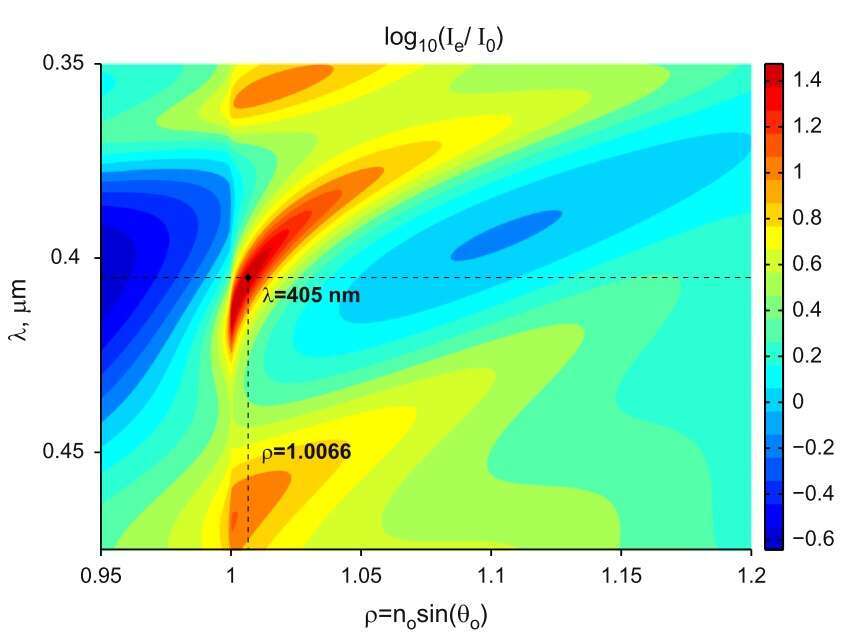
Blue and UV Surface Plasmonics and Sensor Application
We demonstrate effective surface plasmon propagation along thin gold nanofilm in a blue and UV spectral ranges. We used specially designed one dimentional photonic crystal: silica substrate/H(LH)8/H’M/gas, where H is a Ta2O5 layer with the thickness 57.8 nm, L is a SiO2 layer with the thickness 84.4 nm, H’ is a Ta2O5 layer with the thickness of 55 nm and M is a 8 nm-thick gold layer. The scheme of the experimental setup is similar to the Kretschmann configuration. We used p-polarized 405 nm laser light to excite blue surface plasmons. The calculated dispersion diagram of the 1D photonic crystal structure used to support blue surface plasmon propagation (See Figure).

For 405 nm wavelength this structure supports ultralong surface plasmon propagation. An electromagnetic field intensity enhancement equals to 45. Calculated width of resonance dip for the presented structure is 0.4 degree, and the plasmon propagation distance equals to 10 um. For comparison, without the photonic crystal as small propagation length as 0.7 um is attained. Our experiments revealed that the structure at hand does support ultralong surface plasmon propagation, and the angular width of the plasmon excitation peak about 0.6 degree, thus corresponding to the plasmon propagation distance as long as 7 um.This structure and this technique have been tested as a sensor to detect small concentrations of nitrogen dioxide in air. The changes of the light intensity distribution onto the detector caused by the changes of the plasmon excitation conditions are measured. Based on the of our experiments, we estimate the attained limit of the reliable detection of nitrogen dioxide as ca. 3–4 ppm.
The results presented attest an experimental realization of effective surface plasmon propagation in blue and UV spectral ranges.
dmitry.basmanov@ripcm.org.ru
Powered by Eventact EMS